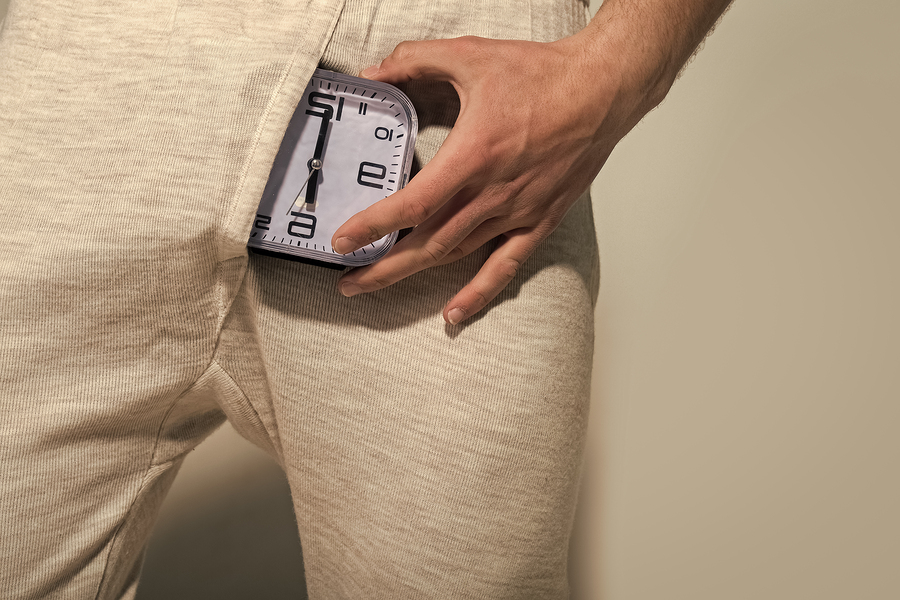Male Multiple Orgasms: The Science & Technique!

The Key to Multiple Male Orgasms: Delaying Ejaculation
By delaying (or avoiding) ejaculation while allowing the orgasmic contractions and associated feelings of pleasure and release to overtake your body, you can experience successive orgasms on your own or with a partner.
While most orgasms are accompanied by ejaculation, orgasm and ejaculation are considered distinct processes despite the fact that most men find that they occur simultaneously.
What’s the difference between male orgasm and male ejaculation?
Orgasm refers to the peak experience of sexual pleasure marked by gratifying contractions and a sense of satisfying sexual release (though this definition will vary from person to person).
Ejaculation refers to the expulsion of fluid via spinal reflex.
When the male orgasm occurs in conjunction with ejaculation, you experience two sets of contractions:
- The first set of contractions prepares the fluid by moving it into the urethral bulb.
- The second set expels the fluid through the penis (via the urethral meatus).
Generally speaking, the first set of contractions results in the experience of “ejaculatory inevitability,” AKA the point of no return.
That is, you’re going to ejaculate no matter what because the external sphincter is open and the internal one is closed. This disallows the flow of urine out of the body and stops semen from entering the bladder. This process is why it’s so difficult to master the withdrawal method.

In some cases, however, the internal sphincter can open resulting in retrograde ejaculation.
If this occurs, the semen flows back into the bladder instead of being expelled. You may still experience the contractions, pleasure, and release associated with orgasm without ejaculating.
This is often referred to as a dry orgasm.
Some people experience dry orgasms because of medical issues related to internal urethral sphincter malfunction. Others learn to have dry orgasms purposefully and medical experts have not identified specific negative side effects — though you may notice that your urine is a bit cloudy after likely due to the absorption of semen.
How to Have Multiple Male Orgasms in 7 Steps
If you’d like to learn to orgasm without ejaculating, consider the exercises and approaches below and be patient with yourself bearing in mind that the learning and experimentation can, in fact, be as gratifying as the potential result:
1. The first step when exploring multiple orgasms (and almost any sexual experience) involves getting to know your pelvic floor.
The PC sling that stretches from your tailbone to your pubic bone is activated during sexual arousal and orgasm.
These muscles are also at work when you exercise, walk, run, crawl, sit, pee, poo and breathe!
Given the highly active role of your pelvic floor in your day-to-day activities, every person who has access to a pelvic floor physiotherapist should take advantage of their expertise. I repeat: see a pelvic floor PT therapist if you have the resources to do so!
It’s not enough to just “do your Kegels.”
They have specialized knowledge to help you tone your pelvic floor and address any challenges or weaknesses — it’s not as simple as “do your Kegels.” In fact, Kegels are contraindicated for many conditions, so please see a pelvic floor physiotherapist (even just once!) if you can.
2. Once you’ve learned to tone and recognize your pelvic floor muscles, you can put them to work during sex.
Unfortunately, we don’t have specific data on which pelvic floor techniques lead to multiple male orgasms, and anecdotal accounts are varied:
- Some people report that squeezing/flexing their pelvic floor muscles for a few seconds when they reach the point of ejaculatory inevitability can stall ejaculation while precipitating the orgasmic sensations
- Others report that short squeezes and pulses do the trick
- Some report that one long squeeze in conjunction with deep, purposeful breathing leads to dry orgasm
- And others find that these squeezing sensations only make ejaculation more powerful
However you slice it, it’s a win-win situation, so have fun and experiment to see what works for you.
3. Experiment with sex play that focuses on other parts of your body
Some men report that they stumble upon dry orgasms and multiple orgasms by accident during nipple play and prostate stimulation. If you’re curious about prostate stimulation, read our guide to the male g-spot!
4. Right before orgasm, squeeze your PC muscle while pressing firmly into your perineum (just behind your balls)
This allows you to access the inner bulb of your penis. Stop stroking and/or thirsting and breathe as you squeeze and press.

5. Wear a vibrating cock ring.
Sex toys aren’t just for solo play — they’re great for couples, too! My partner and I recently discovered the We-Vibe Pivot and with it, multiple orgasms. This AskMen article on cock rings shares great tips for beginners, and I talk about different types to try, from leather to synthetic, stretchy and adjustable to vibrating and textured.
6. You may also want to experiment with basic edging to see if it results in multiple/dry orgasms.
What is edging? This technique involves bringing yourself to the brink of orgasm over and over again, but stopping right before you reach your peak. Breathe deeply and see if orgasmic sensations (sans ejaculation) overtake your body after a few rounds.
7. Your breath is essential to orgasm, so practice controlled deep breathing.
Pay attention to your breath in a variety of high-intensity situations (not just sexual ones) to get to know your body’s autonomic response to different breathing patterns.
Remember that sex is about quality, not quantity, so don’t worry about counting your orgasms.
Instead, embrace variety and experimentation in a way that works for you. And don’t forget to check out my seven tips for multiple female orgasms so you can share the multi-orgasmic love!
Have you experienced male multiple orgasms?
Did any of these tips help you get there? Is there anything we missed? Let us know by tweeting @ASTROGLIDE! And if you’re having trouble getting or maintaining erections in the first place, check out these 10 tips.
Dr. Jess O’Reilly, Ph.D. is a Toronto-based sexologist specializing in sexuality counseling, clinical sexology, sex education, and healthy relationships. Learn more about Dr. Jess here.
